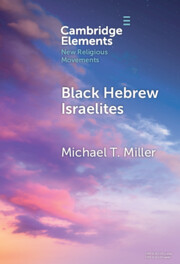Edward Kennedy “Duke” Ellington (1899–1974) emerged within the jazz profession as a prominent exponent of Harlem Renaissance racial uplift ideals about incorporating African American culture into artistic production. Formed in the early twentieth century's middle-class black Protestant culture but not a churchgoer in adulthood, Ellington conveyed a nostalgic appreciation of African American Christianity whenever hewrote music to chronicle African American history. This prominent jazz musician's religious nostalgia resulted in compositions that conveyed to a broader American audience a portrait of African American religiosity that was constantly “classical” and static—not quite primitive, but never appreciated as a modern aspect of black culture.
This article examines several Ellington compositions from the late 1920s through the 1960s that exemplify his deployment of popular representations of African American religious belief and practice. Through the short film Black and Tan in the 1920s, the satirical popular song “Is That Religion?” in the 1930s, the long-form symphonic movement Black, Brown and Beige in the 1940s, the lyricism of “Come Sunday” in the 1950s, and the dramatic prose of “My People” in the 1960s, Ellington attempted to capture a portrait of black religious practice without recognition of contemporaneous developments in black Protestant Christianity in the twentieth century's middle decades. Although existing Ellington scholarship has covered his “Sacred Concerts” in the 1960s and 1970s, this article engages themes and representations in Ellington's work prefiguring the religious jazz that became popular with white liberal Protestants in America and Europe. This discussion of religious narratives in Ellington's compositions affords an opportunity to reflect upon the (un)intended consequences of progressive, sympathetic cultural production, particularly on the part of prominent African American historical figures in their time. Moreover, this article attempts to locate the jazz profession as a critical site for the examination of racial and religious representation in African American religious history.


